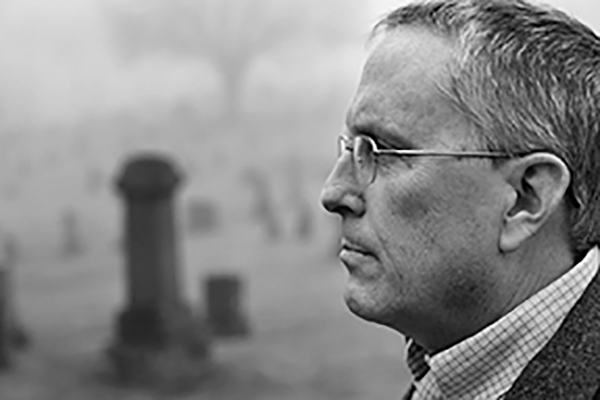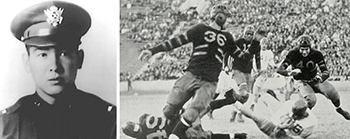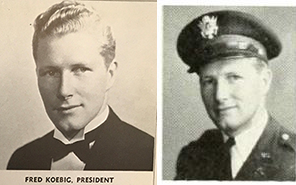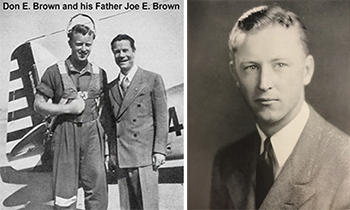 |
|||
 |
|||
Bill Beigel ’80, M.A.’83, has demonstrated rare expertise interpreting the meaning and significance of war time acts and sacrifices for veterans’ families. He has been featured in USA Today, Fox News, CBS News, the Daily Breeze, War History Online, the Daily Bruin, and Hometown Heroes Radio among dozens of other media outlets. Beigel’s book on America’s repatriation of its WWII military casualties, “Return of the World War II Dead Program,” awaits publication. Bill Beigel is a member of the Association of Professional Genealogists, Military Writers Society of America and the International Society of Family History Writers. Along with his complete list of UCLA veterans who served, Bill has also constructed lists for other universities, communities and organizations. We thank him for generously waiving his speaking fee on behalf of his alma mater. 2. What do you most enjoy about your work? 3. What is a misconception about WWII history? 4. What are the major challenges in recovering these lost stories? 5. Could you share some fond memories while doing research? 6. Has your research changed how you see UCLA?
Captain Francis B. Wai ’40, transferred to UCLA, where he was a four sport athlete and graduated in 1939 with a bachelor of science in Banking and Finance. As UCLA Bruin quarterback, WAI (#49), can be seen bringing down the USC Trojan’s ball carrier during the Pacific Coast Conference intra-city tussle at the Los Angeles Memorial Coliseum on Nov. 24, 1938. Wai joined the military upon the outbreak of World War. He served as a Captain, 34th Division on Oct. 20, 1944 in the assault at Red Beach, Leyte, Philippines. Finding the first four waves of American soldiers leaderless, disorganized and pinned down on the open beach, he immediately assumed command. Issuing concise orders, and disregarding enemy machine gun fire he rallied the soldiers and moved them inland. During the advance, he repeatedly determined the locations of enemy strong points by exposing himself to draw their fire. In leading an assault upon the last remaining Japanese pillbox in the area, he was killed. Even after death, his leadership inspired the men to advance and destroy the enemy, securing the beach head. To date, Wai is the only Chinese American and one of only two Asian American officers to receive the Medal of Honor.
Major Fred Koebig ’39, UCLA student body president, pursued excellence in his academic, athletic, and social endeavors. On campus he received major sports letters, and led the 1939 crew team, while also serving as commodore of the Bruin Rowing club. Socially, and as member of Blue C, Koebig organized the Frosh-Soph Brawl and participated in selecting the Homecoming Queen. In his senior year, Koebig led Beta Theta Pi, whose mission is to develop men of principle, as president. As an outstanding cadet in his military courses, he also participated in Scabbard and Blade. Koebig enlisted in the Air Force during WWII, where he engage in the Southwest Pacific Theater, and served as Navigator for Pretty Prairie SPECIAL. In 1944, Major Koebig was captured and killed while a POW of the Japanese. He was being held at a camp on Rabaul, New Guinea, when it was bombed by Allied aircraft. Major Koebig is buried in the Jefferson Barracks National Cemetery.
Captain Don E. Brown ’40, UCLA student body president, and son of famed comedian Joe E. Brown, excelled in his studies, athletic ability, and contributions to the university. Brown played football for three years, and basketball his four years at UCLA. In addition, Brown led the campus R.O.T.C. as cadet-colonel, and was part of Scabbard and Blade given his distinction in military courses. Brown’s academic achievements placed him within the Blue Key Honor Society. Socially, Brown was a member of the international Zeta Psi Fraternity, and the campus activities organization Blue C. Lastly, as ASUC president, Brown supported the student sponsored events and activities at UCLA, and led the Student Council. Brown graduated with a degree in political science, before joining the United States Army Air Force. In 1942, Brown was killed in a training crash near Palm Springs, Calif. Capt. Brown is buried in the Forest Lawn Memorial Park in Glendale, Calif. |
|||
|
|


